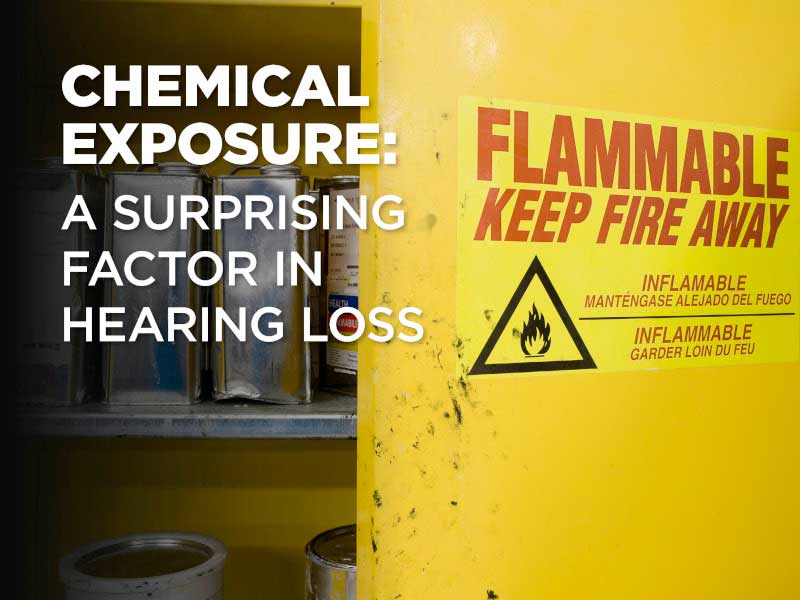- Home
- Loss Control
- Loss Control Insights
- Chemical Exposure: A Surprising Factor in Hearing Loss
Many chemicals can cause hearing loss, especially in loud work environments where chemicals can exacerbate the effects of noise. These chemicals are called ototoxic, which translates to “ear poison.” Ototoxic chemicals can enter the body in several ways, including skin absorption or inhalation.
“This startling piece of safety information is not new,” EMC Senior Industrial Hygienist Kelsie Boorn says. “But it’s flown under the radar, and some details are still not fully understood.”
According to the Department of Mines, Industry Regulation and Safety in Western Australia, 750 different groups of chemicals are potentially ototoxic, but only a few of these have been studied in depth.
Are Your Employees at Risk?
According to OSHA, the answer is a definite “yes” if you are in the industry of agriculture, utilities, construction, mining, or the manufacturing of: machinery, petroleum, paper, plastics, electrical equipment, textiles, leather and solar cells.Many workplace tasks have high noise and ototoxic chemical exposure, such as firefighting, fueling vehicles, printing, painting and spraying pesticides. Some classes of chemicals, including solvents, metals and asphyxiants, are considered ototoxic. Common workplace ototoxic chemicals include:
- Solvents: carbon disulfide, styrene, ethylbenzene, toluene and xylene
- Metals: lead and mercury
- Asphyxiants: Carbon monoxide
This is not a complete list, but if you use any of these chemicals, your workers are most likely at risk. Certain medications can also be ototoxic, meaning you need to provide training on the combination of noise and workplace chemicals, as well as medications.
Taking Action
Simply reading through safety data sheets may not give you all the information you need about the relationship between chemicals and hearing loss. That’s where EMC can help. Contact your EMC industrial hygienist for assistance in determining the dangers your workers face, as well as possible steps you can take. Your EMC representative can help review your chemical list to determine which ones may pose risks to your employees. Once your chemical list is reviewed, you and your EMC representative can work through the hierarchy of hazard control to determine how to handle your company’s ototoxic chemicals and employee exposure. Questions to consider include:- Is another chemical able to be substituted for the ototoxic one?
- Can you isolate the use of chemicals to keep them away from the noise?
- Is it possible to ventilate the area where chemicals are used?
- Can the level of noise be reduced to below 80 dB(A)?*
- Are you able to develop a training program that explains the effect work-related chemicals and medications can have on hearing?
- Can you perform or require a hearing test more frequently to monitor any negative changes in employee hearing levels?
*80 dB(A) is the advised threshold level when ototoxic chemicals are present.
Get in touch
Need help? We’re here for you! Whether you have questions or need personalized assistance, your local office is ready to support you.
Loss Control Insights
Stay informed with the latest news and receive actionable safety tips, all carefully curated by our team of experts.
